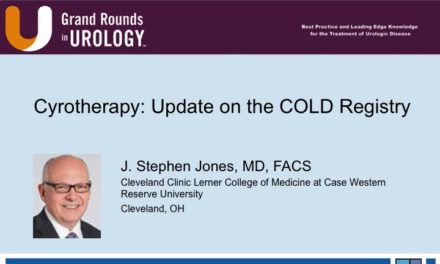
PCa Commentary | Volume 160 – December 2021
Posted by Edward Weber | December 2021
Gene Mutations in the BRCA Family and PARP Inhibition Therapy
PARP [poly (ADP-ribose) polymerase] is a nuclear RNA enzyme essential for repair of single strand DNA damage. It is the default program that repairs damaged DNA that remained unrepaired because of deleterious mutations in the BRCA family of genes, a cell’s first line of repair when DNA is damaged. The primary DNA repair genes, BRCA1 & 2 and ATM, are termed ‘germline,” i.e., inherited and present in all cells. When these DNA repair genes are defective, the cell relies upon the default PARP program to correct the DNA damage. The function of the currently FDA-approved PARP inhibitors, olaparib (Lynparza) and rucaparib (Rubraca) is to prevent PARP repair and cause cell death. PARP inhibition therapy is reviewed in detail in PCa Commentary Vol. 141.
Which Men Should be Tested for Mutations in BRCA1 & 2 and ATM, and Why: A Compressed Summary
Men with aggressive cancer at diagnosis are appropriate candidates for genomic testing, i.e., men with Gleason 3 + 4, PSA values greater than 10 ng/mL and extracapsular extension, seminal vesicle involvement and greater than 50% biopsy cores positive. These features refer to men with unfavorable intermediate- and high-risk cancer. Testing is aimed at diagnosing germline mutations in the BRCA family.
Diagnosing BRCA mutations has consequences for clinical management. Prichard and Nelson (NEJM. Aug 16) reported germline DNA repair gene mutations in 11.8% of men with metastatic disease, including BRCA2 (5.3%), ATM (1.6%), and BRCA1 (0.9%). The effectiveness of PARP inhibition (using olaparib) in these men with metastatic disease was reported in NEJM (2015) by Mateo et al. showing an 88% greater than 50% PSA response in heavily pretreated men with metastatic prostate cancer harboring mutations in the BRCA2 gene.
How to Learn Your BRCA Status
If you have already engaged in ‘23andMe’ or the ‘Gentleman’s Study,” you already have partial BRCA1 & 2 data, since those tests assess germline mutations.
‘Actionable’ mutations are those which adversely influence cell behavior and are vulnerable to therapeutic intervention, i.e., PARP inhibitor therapy in BRCA mutation-positive men.
A second category of mutations is ‘somatic.’ Somatic mutations are those which develop in the course of the disease as cells adapt to the stress of treatment with chemotherapy, radiation, or potent androgen receptor inhibiting agents, i.e., Zytiga and Xtandi.
The incidence of acquired somatic mutations increases to 20-30% in heavily treated men with metastatic disease and may offer additional ‘actionable’ mutations in the BRCA family which may be treated with PARP inhibitors. These mutations can be diagnosed by “liquid biopsy” of plasma assessing circulating tumor DNA (ctDNA).
BRCA1 & 2 and ATM mutations can be identified by submitting tissue to institutional pathology departments or commercial labs such as Foundationmedicine.com, which offers an expanded panel of several hundred genomic variations. The company also offers a limited panel, FoundationFocusCDxBRCA, which is a ctDNA panel analyzing for deleterious germline and somatic mutations in BRCA1 & 2. The University of Washington has an extensive panel (UW OncoPlex Cancer Gene Panel), but also offers the possibility of selecting 4 genes for analysis (which might be BRCA1, BRCA2, ATM, and CDK12).
A practical question is whether germline analysis (e.g., for saliva buccal scraping or from blood) captures all mutations of BRCA2 (the most prevalent mutation) or whether at the time of metastatic disease there is a need for additional analysis of somatic variants to capture the full range of BRCA mutations. Germline testing will detect 50% of the targetable DNA repair alterations (primarily BRCA1 or 2) in a man with prostate cancer.
Another practical question is whether sequencing tissue from prior prostatectomy or biopsy will detect mutations that are relevant to a man who developed advanced prostate cancer years later. Schweizer and Montgomery et al. (JAMA Oncol. June 2021), in an elegant example of genomic research, determined that most of the actionable mutations in BRCA2, ATM, and CDK12 (a target for immune checkpoint inhibitor therapy) are present in primary tissue if they were found in metastatic biopsies or circulating tumor DNA.
Their conclusion: Sequencing of primary needle biopsies and prostatectomy specimens can find essentially all of the actionable alterations that can be used to prescribe PARP inhibitors.
How May PARP Inhibitor Therapy be Sequenced in the Management of Prostate Cancer? The PROfound Trial Addressed This Issue.
Conventionally, following initial therapy (surgery or radiation) when progression is declared at the rise of PSA to above 0.2 ng/mL, the first line systemic intervention is with hormone suppression (leuprolide, degarelix, relugolix). When subsequent PSA progression occurs, Zytiga, Xtandi, or chemotherapy are considered in a variety of sequences.
The PROfound trial assessed men with mutations in BRCA1 & 2 and ATM with non-metastatic cancer but rising PSA following treatment with either Zytiga or Xtandi when used as the second-line hormonal agent. One study group was randomized to olaparib and the other to either Zytiga or Xtandi, depending on which agent has been used first and on which men had progressed. Olaparib was found to have superior benefit compared to either of the hormonal agents used as second-line treatment. The radiographic progression-free survival was 7.5 months for olaparib vs. 3.5 months for the alternate hormonal agent—either Zytiga or Xtandi. Thirty-three percent of men responded to olaparib vs. 2.3% to the second-line hormonal agent (confirming the known poor response to a second hormonal agent following a prior second-line hormonal agent). The overall survival was 18 months for olaparib vs. ~14.5 months for men who were treated with the hormonal agent.
Olaparib Therapy in the Setting of Metastatic Disease.
The TOPARP trial studied heavily pretreated men harboring metastatic castration-resistant prostate cancer and compared the outcome of those men with BRCA1/2 and ATM mutations to a matched cohort lacking these mutated genes. The mutational status was determined using FoundationFocus CDxBRCA analysis of circulating tumor DNA.
The benefit of the PARP inhibitor was evident: Radiographic progression-free survival for olaparib in biomarker-positive men was 9.8 months vs. 2.7 for those who were biomarker negative. Overall survival in biomarker-positive men was 13.8 months vs. 7.5 for those lacking BRCA mutations.
BOTTOM LINE:
Clearly the message is: Know your BRCA status! When sequencing hormonal agents early in the course of prostate cancer or in the setting of metastatic disease, PARP inhibition therapy in BRCA-positive men can offer significant benefit.
Your comments and requests for information on a specific topic are welcome e-mail ecweber@nwlink.com.
Please also visit https://prostatecancerfree.org/prostate-cancer-news for a selection of past issues of the PCa Commentary covering a variety of topics.
“I want to thank Dawn Scott, Staffperson, Tumor Institute Radiation Oncology Group, and Mike Scully, Librarian, Swedish Medical Center for their unfailing, timely, and resourceful support of the Commentary project. Without their help this Commentary would not be possible.”
ABOUT THE AUTHOR
Edward Weber, MD, is a retired medical oncologist living in Seattle, Washington. He was born and raised in a suburb of Reading, Pennsylvania. After graduating from Princeton University in 1956 with a BA in History, Dr. Weber attended medical school at the University of Pennsylvania. His internship training took place at the University of Vermont in Burlington.
A tour of service as a Naval Flight Surgeon positioned him on Whidbey Island, Washington, and this introduction to the Pacific Northwest ultimately proved irresistible. Following naval service, he received postgraduate training in internal medicine in Philadelphia at the Pennsylvania Hospital and then pursued a fellowship in hematology and oncology at the University of Washington.
His career in medical oncology was at the Tumor Institute of the Swedish Hospital in Seattle where his practice focused largely on the treatment of patients experiencing lung, breast, colon, and genitourinary cancer and malignant lymphoma.
Toward the end of his career, he developed a particular concentration on the treatment of prostate cancer. Since retirement in 2002, he has authored the PCa Commentary, published by the Prostate Cancer Treatment Research Foundation, an analysis of new developments in the prostate cancer field with essays discussing and evaluating treatment management options in this disease. He is a regular speaker at various prostate cancer support groups around Seattle.




